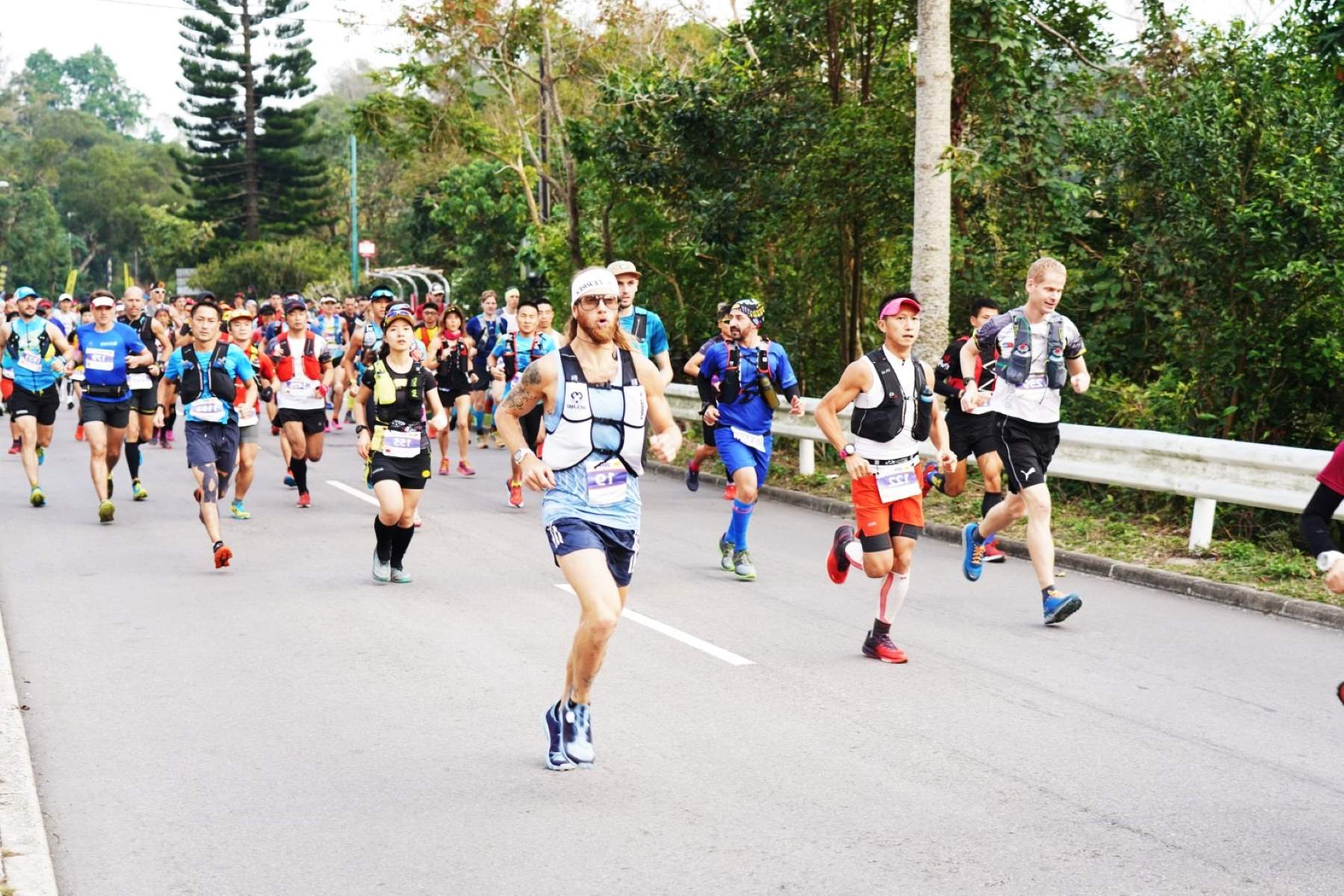Home>Training & Techniques>Training Plans>Marathon Training: A 10-Day Cycle


Training Plans
Marathon Training: A 10-Day Cycle
Published: March 7, 2024
Discover effective 10-day cycle marathon training plans to improve your performance and endurance. Reach your goals with expert guidance and tailored workouts. Start today!
(Many of the links in this article redirect to a specific reviewed product. Your purchase of these products through affiliate links helps to generate commission for Therunningadvisor.com, at no extra cost. Learn more)
Table of Contents
- Understanding the 10-Day Training Cycle
- Day 1-3: Building Base Mileage
- Day 4-6: Introducing Speed and Tempo Work
- Day 7-8: Active Recovery and Cross-Training
- Day 9-10: Tapering and Rest
- Nutrition and Hydration Throughout the 10-Day Cycle
- Importance of Proper Rest and Recovery
- Mental Preparation and Mindset for Marathon Training
- Injury Prevention and Listening to Your Body
- Final Thoughts: Putting It All Together for Race Day
Understanding the 10-Day Training Cycle
Marathon training requires a strategic approach to ensure that runners are adequately prepared for the grueling 26.2-mile race. The 10-day training cycle is a unique and effective method that provides runners with a balance of intense workouts, recovery periods, and tapering. This cycle allows for a more flexible approach to training, catering to the individual needs of the runner while still ensuring they are adequately prepared for race day. Understanding the intricacies of this 10-day training cycle is crucial for any marathon runner looking to optimize their training and performance.
Read more: A Three-Day-A-Week Marathon Training Plan
Day 1-3: Building Base Mileage
During the first three days of the 10-day training cycle, the focus is on building base mileage. This period is crucial for establishing a strong foundation for the rest of the training cycle. Runners gradually increase their mileage, allowing their bodies to adapt to the demands of long-distance running. The emphasis is on slow, steady runs at a comfortable pace, aimed at improving endurance and aerobic capacity. It's essential for runners to listen to their bodies during this phase, ensuring that they do not push themselves too hard too soon, which could lead to injury or burnout.
Tips for Building Base Mileage:
- Gradual Progression: Increase mileage by no more than 10% each week to prevent overtraining and reduce the risk of injury.
- Focus on Form: Pay attention to running form and posture to maintain efficiency and reduce the risk of strain.
- Recovery: Adequate rest between runs is crucial for allowing the body to adapt and recover from the increased mileage.
- Hydration and Nutrition: Proper hydration and nutrition support the body's ability to handle increased mileage and aid in recovery.
By focusing on building base mileage during the initial phase of the 10-day cycle, runners set themselves up for success in the subsequent phases of training. This gradual approach allows the body to adapt and strengthen, laying the groundwork for more intense workouts in the days to come.
Day 4-6: Introducing Speed and Tempo Work
As the training cycle progresses into days 4-6, runners shift their focus to incorporating speed and tempo work into their training regimen. This phase is essential for improving overall race pace, enhancing cardiovascular fitness, and building mental toughness. Introducing speed and tempo work challenges the body to adapt to higher intensity efforts, ultimately leading to improved race performance.
Benefits of Speed and Tempo Work:
- Increased Speed: Incorporating interval training and speed work helps improve leg turnover and overall running speed.
- Enhanced Endurance: Tempo runs at a comfortably hard pace improve the body's ability to sustain effort over longer distances.
- Mental Toughness: Pushing through challenging speed and tempo workouts builds mental resilience, crucial for enduring the demands of a marathon.
Tips for Introducing Speed and Tempo Work:
- Structured Workouts: Implement structured speed workouts such as intervals, fartleks, or hill repeats to improve anaerobic capacity and running economy.
- Gradual Progression: Start with shorter speed intervals and gradually increase the duration and intensity to prevent overexertion and reduce the risk of injury.
- Proper Warm-Up and Cool Down: Prioritize a thorough warm-up and cool down to prepare the body for intense efforts and aid in recovery.
- Mindful Pacing: Pay attention to pacing during tempo runs to maintain a comfortably hard effort without going into an all-out sprint.
By incorporating speed and tempo work during days 4-6 of the 10-day training cycle, runners enhance their overall fitness, improve race pace, and mentally prepare themselves for the challenges of marathon running. This phase sets the stage for the subsequent days of training, where runners continue to fine-tune their physical and mental readiness for race day.
Day 7-8: Active Recovery and Cross-Training
Days 7-8 of the 10-day training cycle are dedicated to active recovery and cross-training, providing runners with a much-needed break from high-impact running while still engaging in beneficial activities to support overall fitness and recovery. Active recovery involves low-intensity exercises and techniques that promote healing and restoration, allowing the body to recover from the demands of previous training days. Cross-training, on the other hand, involves participating in alternative forms of exercise to complement running, targeting different muscle groups, and reducing the risk of overuse injuries.
Benefits of Active Recovery and Cross-Training:
- Muscle Repair and Regeneration: Engaging in low-impact activities such as swimming, cycling, or yoga promotes blood flow to the muscles, aiding in repair and recovery.
- Injury Prevention: Cross-training allows runners to strengthen supporting muscle groups and reduce the risk of overuse injuries commonly associated with repetitive running motion.
- Mental Refreshment: Taking a break from running while still being active can provide a mental break, reducing burnout and enhancing overall motivation.
Tips for Active Recovery and Cross-Training:
- Low-Impact Activities: Choose activities that are gentle on the joints, such as swimming, cycling, or walking, to promote recovery without adding additional stress to the body.
- Variety: Engage in a variety of cross-training activities to target different muscle groups and prevent monotony in training.
- Mindful Rest: While engaging in active recovery and cross-training, it's essential to prioritize rest and relaxation to allow the body to fully recover and prepare for the upcoming training days.
By incorporating active recovery and cross-training into the 10-day training cycle, runners can optimize their recovery, reduce the risk of injury, and maintain overall fitness levels. These restorative days play a crucial role in ensuring that runners are physically and mentally prepared for the challenges of marathon training.
Day 9-10: Tapering and Rest
As marathon runners approach the final days of the 10-day training cycle, the focus shifts to tapering and rest. Tapering involves a gradual reduction in training volume and intensity to allow the body to recover and adapt fully before race day. This phase is essential for minimizing fatigue, repairing muscle damage, and ensuring that runners are in peak condition for the upcoming marathon. Tapering also provides mental relief, allowing runners to approach race day feeling refreshed and prepared.
Benefits of Tapering and Rest:
- Muscle Repair: Tapering allows for the repair of any micro-tears in the muscles caused by intense training, ensuring that runners are at their physical best on race day.
- Energy Restoration: The reduction in training volume during tapering allows for the restoration of glycogen stores and energy levels, ensuring that runners feel strong and energized for the marathon.
- Mental Preparation: Tapering provides an opportunity for runners to mentally prepare for the race, visualizing their performance and building confidence in their abilities.
Tips for Tapering and Rest:
- Gradual Reduction: Gradually decrease training volume and intensity over the course of the taper, allowing the body to adapt without feeling abrupt changes.
- Maintain Routine: While reducing mileage, it's important for runners to maintain their regular training routine to avoid feelings of restlessness or anxiety.
- Prioritize Rest: Emphasize the importance of rest and recovery during the tapering phase, ensuring that the body is fully prepared for the demands of the marathon.
By incorporating tapering and rest into the final days of the 10-day training cycle, runners set themselves up for success on race day. This phase allows for physical and mental rejuvenation, ensuring that runners are primed to perform at their best when it matters most.
Nutrition and Hydration Throughout the 10-Day Cycle
Proper nutrition and hydration play a pivotal role in the overall success of marathon training. Throughout the 10-day training cycle, runners must pay close attention to their dietary choices and fluid intake to support their training, aid in recovery, and optimize performance on race day.
Importance of Nutrition
Nutrition serves as the fuel that powers the body through the demands of marathon training. Adequate intake of carbohydrates, proteins, healthy fats, vitamins, and minerals is essential for maintaining energy levels, supporting muscle repair, and bolstering the immune system. During the base mileage building phase (days 1-3), runners should focus on consuming a balanced diet that provides the necessary nutrients to sustain their increasing mileage. Incorporating complex carbohydrates, lean proteins, and healthy fats into meals and snacks can help maintain energy levels and promote muscle recovery.
Hydration Strategies
Proper hydration is equally crucial, especially as runners increase their training intensity. Dehydration can lead to decreased performance, muscle cramps, and fatigue. Throughout the 10-day cycle, runners should prioritize consistent hydration by consuming an adequate amount of water and electrolytes. During the speed and tempo work phase (days 4-6), paying attention to hydration becomes even more critical as the body sweats more profusely during intense workouts. Electrolyte-rich drinks or supplements can help replenish lost minerals and support hydration during these periods.
Pre- and Post-Workout Nutrition
Strategic pre- and post-workout nutrition can significantly impact training quality and recovery. Before intense workouts, runners should consume easily digestible carbohydrates to provide immediate energy. Post-workout meals or snacks should include a combination of protein and carbohydrates to aid in muscle repair and glycogen replenishment. This becomes especially important during the tapering phase (days 9-10) as the body requires optimal nutrition to recover and prepare for the marathon.
Meal Timing and Frequency
Maintaining consistent meal timing and frequency is essential for sustaining energy levels and supporting recovery throughout the 10-day training cycle. Eating smaller, balanced meals and snacks every 3-4 hours can help stabilize blood sugar levels and prevent energy dips. Additionally, consuming a well-balanced meal that includes carbohydrates, proteins, and fats within 30-60 minutes after a workout can aid in muscle recovery and replenish glycogen stores.
Listening to the Body
Lastly, it's crucial for runners to listen to their bodies and adjust their nutrition and hydration strategies based on individual needs. Factors such as sweat rate, climate, and personal dietary preferences can influence the specific requirements for each runner. By staying attuned to their bodies' signals, runners can make informed decisions about their nutrition and hydration, ensuring that they are adequately fueled and hydrated throughout the 10-day training cycle.
By prioritizing proper nutrition and hydration throughout the 10-day training cycle, runners can optimize their training, support recovery, and enhance their overall performance on race day. These dietary strategies work in tandem with the training phases, providing runners with the necessary fuel and fluids to conquer the challenges of marathon training.
Importance of Proper Rest and Recovery
Proper rest and recovery are integral components of any marathon training program. While the focus is often on the physical exertion and intensity of workouts, the role of rest and recovery should not be underestimated. Adequate rest allows the body to repair and strengthen itself, leading to improved performance and reduced risk of injury. Here's a detailed look at the importance of proper rest and recovery throughout the 10-day training cycle.
Physical Repair and Adaptation
Rest is the time when the body undergoes essential repair processes. During intense workouts, muscle fibers experience micro-tears, and rest periods allow these fibers to repair and adapt, leading to increased strength and endurance. Without sufficient rest, the risk of overuse injuries and muscular imbalances significantly rises. Additionally, rest periods provide an opportunity for the body to replenish energy stores, such as glycogen, essential for sustained performance during training and on race day.
Mental Rejuvenation
In addition to physical repair, rest and recovery play a crucial role in mental rejuvenation. Marathon training can be mentally taxing, and adequate rest allows runners to recharge their mental batteries. It provides an opportunity to reduce stress, anxiety, and burnout, ultimately enhancing motivation and mental resilience. Mental freshness gained through rest can positively impact the quality of future workouts and overall training experience.
Adaptation to Training Stress
The body's ability to adapt to the stress of training is heavily reliant on adequate rest and recovery. Without proper recovery periods, the risk of overtraining increases, leading to decreased performance, persistent fatigue, and heightened susceptibility to illness. Rest allows the body to adapt to the stress of training, leading to improved fitness levels and performance gains. It's during rest periods that the body supercompensates, becoming stronger and more resilient in response to the training stimulus.
Sleep Quality and Quantity
Quality sleep is a cornerstone of effective rest and recovery. During sleep, the body releases growth hormone, crucial for muscle repair and recovery. Additionally, adequate sleep supports immune function, cognitive performance, and emotional well-being. Throughout the 10-day training cycle, prioritizing consistent and sufficient sleep is essential for maximizing the benefits of training and ensuring that the body is adequately prepared for the demands of marathon running.
Injury Prevention
Proper rest and recovery are key components of injury prevention. Overtraining and inadequate rest can lead to a variety of overuse injuries, including stress fractures, tendonitis, and muscle strains. By incorporating rest days and recovery strategies, runners can mitigate the risk of injury, allowing for sustained, uninterrupted training. Additionally, rest periods provide an opportunity for runners to address any early signs of injury, preventing them from progressing into more severe conditions.
Incorporating proper rest and recovery into the 10-day training cycle is essential for maximizing the benefits of training, reducing the risk of injury, and ensuring that runners are physically and mentally prepared for the challenges of marathon running. By recognizing the importance of rest and recovery, runners can optimize their training, leading to improved performance and overall well-being.
Mental Preparation and Mindset for Marathon Training
Mental preparation and mindset play a pivotal role in the success of marathon training. The grueling nature of a marathon requires not only physical endurance but also mental fortitude. Here's a detailed exploration of the strategies and mindset required for effective mental preparation during marathon training.
Read more: Top 10 Hill Training Workouts For Runners
Visualizing Success
Visualization is a powerful tool for mental preparation. Athletes often utilize visualization techniques to imagine themselves successfully completing the marathon. By visualizing the racecourse, envisioning overcoming challenges, and crossing the finish line, runners can instill confidence and reduce anxiety. Visualizing success can also help in mentally rehearsing race strategies, pacing, and handling potential obstacles, ultimately enhancing race-day performance.
Goal Setting and Positive Self-Talk
Setting clear, achievable goals is essential for maintaining motivation and focus throughout the training cycle. By establishing both short-term and long-term goals, runners can track their progress and celebrate milestones, fostering a sense of accomplishment. Positive self-talk, or the practice of using affirming and encouraging language, can bolster confidence and resilience. Affirmations such as "I am strong," "I can overcome any challenge," and "I am prepared for this race" can help maintain a positive mindset during training and on race day.
Embracing the Journey
Marathon training is a transformative journey, and embracing the process is crucial for maintaining a positive mindset. Recognizing the incremental improvements, learning from setbacks, and finding joy in the training experience can contribute to a resilient and optimistic mindset. Embracing the journey also involves acknowledging the dedication, discipline, and hard work invested in training, fostering a sense of pride and determination.
Managing Race-Day Nerves
Nervousness and pre-race jitters are common experiences for marathon runners. Effective mental preparation involves developing strategies to manage race-day nerves. Techniques such as deep breathing, mindfulness meditation, and focusing on controllable factors can help alleviate anxiety. Additionally, having a race-day plan, including pre-race rituals and routines, can provide a sense of structure and control, reducing nervousness and enhancing mental preparedness.
Resilience and Adaptability
Marathon training is not without its challenges, and developing resilience and adaptability is essential for maintaining a strong mindset. Embracing setbacks as learning opportunities, adjusting training plans as needed, and remaining flexible in the face of unforeseen circumstances are key components of mental preparation. Cultivating resilience allows runners to bounce back from disappointments and setbacks, ultimately strengthening their mental fortitude.
Building Confidence through Training
Consistent, purposeful training serves as a foundation for building confidence and mental strength. Each completed workout, long run, and challenging session contributes to a sense of preparedness and capability. Reflecting on the progress made during training can instill confidence and self-assurance, essential for maintaining a positive and resilient mindset throughout the training cycle.
By prioritizing mental preparation and cultivating a resilient, positive mindset, runners can optimize their training experience and enhance their performance on race day. Effective mental preparation not only contributes to physical success but also fosters a sense of fulfillment and accomplishment throughout the marathon training journey.
Injury Prevention and Listening to Your Body
Injury prevention is a critical aspect of marathon training, and it goes hand in hand with the ability to listen to your body's signals. Understanding the warning signs and cues that your body provides can help prevent minor discomforts from escalating into serious injuries that could derail your training progress. Here's a detailed exploration of injury prevention strategies and the importance of attuning yourself to your body's needs during marathon training.
Understanding Your Body's Signals
Listening to your body involves being attuned to both subtle and overt signals it sends. These signals can manifest as discomfort, pain, fatigue, or changes in performance. It's essential to differentiate between the normal fatigue associated with intense training and the warning signs of potential injury. Paying attention to localized pain, persistent discomfort, or unusual changes in gait or form during running can provide valuable insights into your body's condition.
Gradual Progression and Recovery
One of the fundamental principles of injury prevention is the concept of gradual progression and adequate recovery. Sudden, drastic increases in training volume or intensity can place excessive stress on the body, increasing the risk of overuse injuries. By following a structured training plan that incorporates gradual progression and built-in recovery periods, runners can minimize the likelihood of overtraining and associated injuries. Additionally, prioritizing rest and recovery between workouts allows the body to adapt and repair, reducing the risk of cumulative stress-related injuries.
Cross-Training and Strength Training
Incorporating cross-training and strength training into your marathon preparation can significantly contribute to injury prevention. Cross-training activities such as swimming, cycling, or yoga provide a break from the repetitive impact of running while still maintaining cardiovascular fitness and promoting overall strength and flexibility. Strength training, particularly exercises that target the core, hips, and stabilizing muscles, can improve running biomechanics and reduce the risk of overuse injuries. By diversifying your training regimen, you can address muscular imbalances and reduce the strain on specific muscle groups, ultimately lowering the risk of injury.
Rest and Active Recovery
Proper rest and active recovery play a crucial role in injury prevention. Allowing the body sufficient time to recover between intense workouts is essential for tissue repair and adaptation. Active recovery techniques such as foam rolling, stretching, and mobility exercises can aid in muscle recovery and reduce post-exercise soreness. Moreover, incorporating rest days into your training schedule provides an opportunity for the body to heal and regenerate, ultimately reducing the risk of overuse injuries and burnout.
Seeking Professional Guidance
In the pursuit of injury prevention, seeking professional guidance from a coach, physical therapist, or sports medicine specialist can provide valuable insights and personalized recommendations. These professionals can assess your running form, biomechanics, and potential areas of weakness or imbalance, offering targeted strategies to mitigate injury risk. Additionally, they can provide guidance on injury-specific prevention exercises, rehabilitation protocols, and modifications to training plans based on individual needs.
Adapting Training in Response to Signals
Listening to your body also involves the willingness to adapt your training in response to its signals. If you experience persistent discomfort, pain, or signs of overtraining, it's crucial to modify your training plan accordingly. This may involve reducing training volume, adjusting workout intensity, or incorporating additional rest days as needed. Ignoring warning signs and pushing through pain can exacerbate injuries and lead to prolonged setbacks in training. By being proactive and responsive to your body's signals, you can mitigate the risk of injury and maintain long-term training consistency.
By prioritizing injury prevention strategies and actively listening to your body's cues, runners can minimize the risk of training-related injuries and sustain their progress throughout the marathon training cycle. Understanding your body's signals, incorporating diverse training modalities, and seeking professional guidance can collectively contribute to a healthy, injury-free training experience, ultimately preparing you for success on race day.
Final Thoughts: Putting It All Together for Race Day
As race day approaches, it's essential to reflect on the comprehensive training journey and the culmination of efforts invested in marathon preparation. The 10-day training cycle has provided a structured framework for building endurance, improving speed, prioritizing recovery, and nurturing a resilient mindset. Now, as runners stand on the brink of the marathon, it's time to synthesize all elements of training into a cohesive strategy for race day success.
The base mileage built during the initial phase has laid a robust foundation for enduring the demands of the marathon. The gradual progression and focus on form have honed running efficiency, preparing the body for the sustained effort ahead. Introducing speed and tempo work has sharpened race pace and mental toughness, equipping runners with the tools to navigate the ebbs and flows of the marathon course.
The emphasis on active recovery and cross-training has provided essential rejuvenation, allowing the body to heal and adapt. These periods of rest have been instrumental in injury prevention, ensuring that runners arrive at the start line in optimal physical condition. Tapering and rest in the final days have facilitated the replenishment of energy stores and the repair of any lingering fatigue, setting the stage for a peak performance on race day.
Nutrition and hydration have been carefully curated to support training demands, aid in recovery, and optimize performance. By fueling the body with the necessary nutrients and fluids, runners have fortified themselves for the rigors of the marathon. The importance of proper rest and recovery has been underscored throughout the training cycle, emphasizing the symbiotic relationship between physical and mental well-being.
Mental preparation and mindset have been cultivated to instill confidence, resilience, and adaptability. Visualization, goal setting, and positive self-talk have fortified the mental fortitude required to conquer the marathon. Embracing the journey, managing race-day nerves, and building confidence through training have collectively contributed to a robust mental framework for success.
Injury prevention and the art of listening to the body have been integral components of the training journey. By understanding the body's signals, incorporating diverse training modalities, and seeking professional guidance, runners have mitigated the risk of training-related injuries, ensuring that they arrive at race day healthy and prepared.
As runners stand at the precipice of the marathon, it's crucial to internalize the collective wisdom and experiences garnered throughout the training cycle. Every step, every mile, and every challenge has been a building block in the preparation for this momentous event. The 10-day training cycle has been a microcosm of the marathon journey, encapsulating the dedication, perseverance, and resilience required for success.
In the final moments before the marathon, it's time to trust in the training, believe in the preparation, and embrace the journey that has led to this pinnacle. The physical and mental readiness cultivated over the 10-day training cycle has primed runners for the ultimate test of endurance and determination. As they toe the start line, they carry with them the culmination of their training, the strength of their mindset, and the unwavering spirit of a marathon runner.







